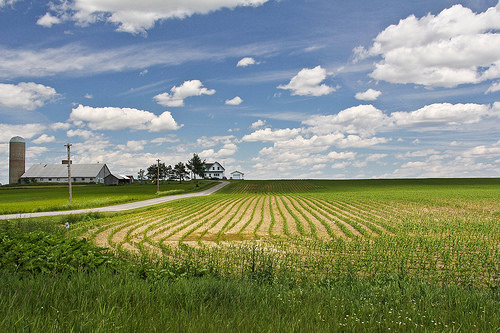
Poor connectivity is a longstanding issue in rural communities. The lack of high quality broadband services in rural areas means that farmers, rural business owners and their families are being left behind.
Children are unable to complete online homework tasks and recent government plans to Make Tax Digital have overlooked the fact that many rural business owners don’t have a reliable connection to the internet.
Within the telecommunications industry, some companies have attempted to address connectivity issues themselves. For example, the development of LLU broadband means that the physical equipment owned by companies such as BT can be used by other companies.
In theory, this should allow companies to provide more competitive broadband deals and a wider range of products and higher connection speeds for end users.
Similarly, Ofcom recently made the decision to separate BT and Openreach in an effort to open up the network and result in improved infrastructure and broadband speeds.
Rural heroes solve connectivity woes
Despite these efforts, in rural areas where there is little or no equipment to begin with, these options fail to solve the problem.
In response to poor connectivity, rural communities have taken the task of creating better broadband services into their own hands.
When Chris Conder’s neighbour’s broadband connection was blocked by tall trees in 2009, she decided enough was enough. After purchasing a kilometre of fibre-optic cable, Chris set about digging trenches and laying cables to get her Lancashire community connected.
Speaking to the BBC, Chris said that "We dug it ourselves and we lit [the cable] ourselves and we proved that ordinary people could do it. It wasn't rocket science. It was three days of hard work."
That was just the start. Today, Chris runs her own internet service provider company, B4RN. Chris and her 14 staff provide an internet connection to over 2,300 customers with unparalleled broadband speeds of one gigabit per second. These are impressive broadband speeds for a rural customer.
Chris has been recognised for her services to rural broadband and in 2015 she was awarded an MBE. However, Chris still has concerns over the future of rural connectivity.
Chris has been vocal on social media about landowners who want to charge money for B4RN to cable on their land. She was particularly vexed by Highways England’s proposed £4,500 charge to allow Chris to lay cables under an unused railway bridge.
Government tax relief for broadband providers
The Government’s recent announcement of £60 million of tax relief for network providers could mean that these barriers are a thing of the past.
The funding won’t apply to existing infrastructure, so rural communities should expect to see increased digital development over the coming years.
These incentives are in line with the government’s goal to provide superfast broadband for at least 95% of UK premises and universal access to basic broadband.
The main aim of the scheme is to get rural communities digitally connected and to encourage existing network providers to expand and improve the services that they offer.
Companies such as B4RN and national service providers will all benefit from the scheme so people in rural areas should also have more than one provider to choose from.
Increased access to broadband will be a big boost for rural communities who increasingly need to be connected. Reliable, high speed broadband connections will allow people in rural areas to stay in touch with family and friends, update their tax returns and promote their businesses online. With improved connectivity, rural communities can continue to thrive.
